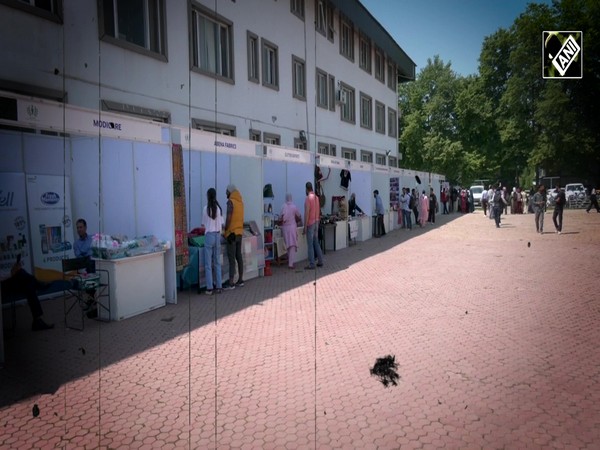India takes giant strides towards uninterrupted water sufficiency
Jan 01, 2023

New Delhi [India], January 1 : To better understand the level of well-being of a population, the quality of basic humanitarian services like nutrition and water tends to be the best metric.
Therefore, it often disappoints statisticians and environmentalists alike that a USD 3 trillion economy like India could arrange for proper tap water access to only about 4 crore rural households in the seven long decades since 1947.
However, by addressing such issues and moving towards developing an ecologically-sound framework, India has remained at the forefront of many global initiatives that are geared at protecting the environment as well as its water resources.
Therefore, it becomes even more significant to accord the topmost priority to the concept of water governance. From creating a focused ministry for water resources to implementing a holistic approach towards conservation, the government has taken numerous measures in this area.
Some of these measures are refined versions of schemes that were announced much earlier, while some are unprecedented and entirely novel in nature.
Therefore, it also makes for interesting news then that with the advent of the Jal Jeevan Mission in 2019, about 5 crore households have been provided with similar water connections at a rapid pace over only the last two years - more than the number of households that obtained such connections in the last sixty-five years.
With the vision of providing safe and adequate drinking water through individual household tap connections to all rural households by the year 2024, the Jal Jeevan Mission was thrust into action aimed at the huge and deprived rural Indian population.
Recently, with the Amrit Sarovar Yojana that was launched in April 2022, over 75 ponds are being constructed in every district of the country to ensure that there is no shortage of drinking water for the upcoming generations as well.
Achieving resounding success in water conservation measures within months of its launch, more than 25,000 ponds have been constructed as part of the Yojana. The idea is to remove the water scarcity issues plaguing rural areas of India by the upcoming Independence Day in 2023.
Under the initiative, the target of 50,000 Amrit Sarovars has been decided though work has begun on 52,245 sites already as of November 17th, 2022. This initiative clearly denotes the holistic community-driven aspect of the mission as well, and therefore makes it important to necessarily include information, education, and communication as a key components of the mission as well. It relies on the understanding that any such mission aimed at providing sufficient water supply infrastructure necessarily requires a broad-based movement with inputs and aid from all quarters of the society, particularly all stakeholders at the grassroots level.
Another interesting initiative to help with such conservation has been the newly-launched campaign of 'Catch the Rain' under the flagship scheme of the Jal Shakti Abhiyaan. Simply initiated to promote awareness and put in place a special action plan for rainwater conservation in the country, emphasis is put on ensuring that arrangements are in place before the onset of monsoon.
Tree plantation, cleaning, puddle construction, and other awareness-related drives are conducted as part of this campaign to create adequate awareness of the issue. On a larger scale, efforts have been made to make proper and judicious use of water through the dam safety rehabilitation programs. Due to the lack of regular maintenance until now, water has been wasted or improperly utilized, life and property have remained at substantial risk, crops have been damaged and villages inundated. To counter these, a Dam Safety Act has been put into motion by the government and shall be implemented after deliberations and scrutiny.
With renewed vigor and clarity toward conserving water and ensuring its steady supply for the generations to come. A wide range of schemes has been launched and revisited. Through the development of numerous in-village piped water supply infrastructure projects, augmentation of existing sources as well as the creation of new sources, the idea is to further strengthen the collective commitment of the society towards rainwater conservation as well.
To further ensure that rural India does not lag behind due to illiteracy and lack of awareness, different aspects of the scheme and knowledge-sharing when it comes to safe drinking water have been publicized through the technological advancements of an Amrit Sarovar portal. In addition, the Jal Jeevan Mission App has also been developed to convey the necessary information related to the scheme.
Any individual using the app or the portal can check the progress of the schemes, water quality monitoring, and details of water supply schemes, along with the option of filing complaints.
In toto, it is clear that water supply, rainwater conservation, and water sufficiency as issues are being tackled with intent by the Government of India. Though delayed by a few decades, the prompt action being undertaken now is a necessary step in the right direction toward ensuring the basic minimum that every household should have in every salubrious society.




















